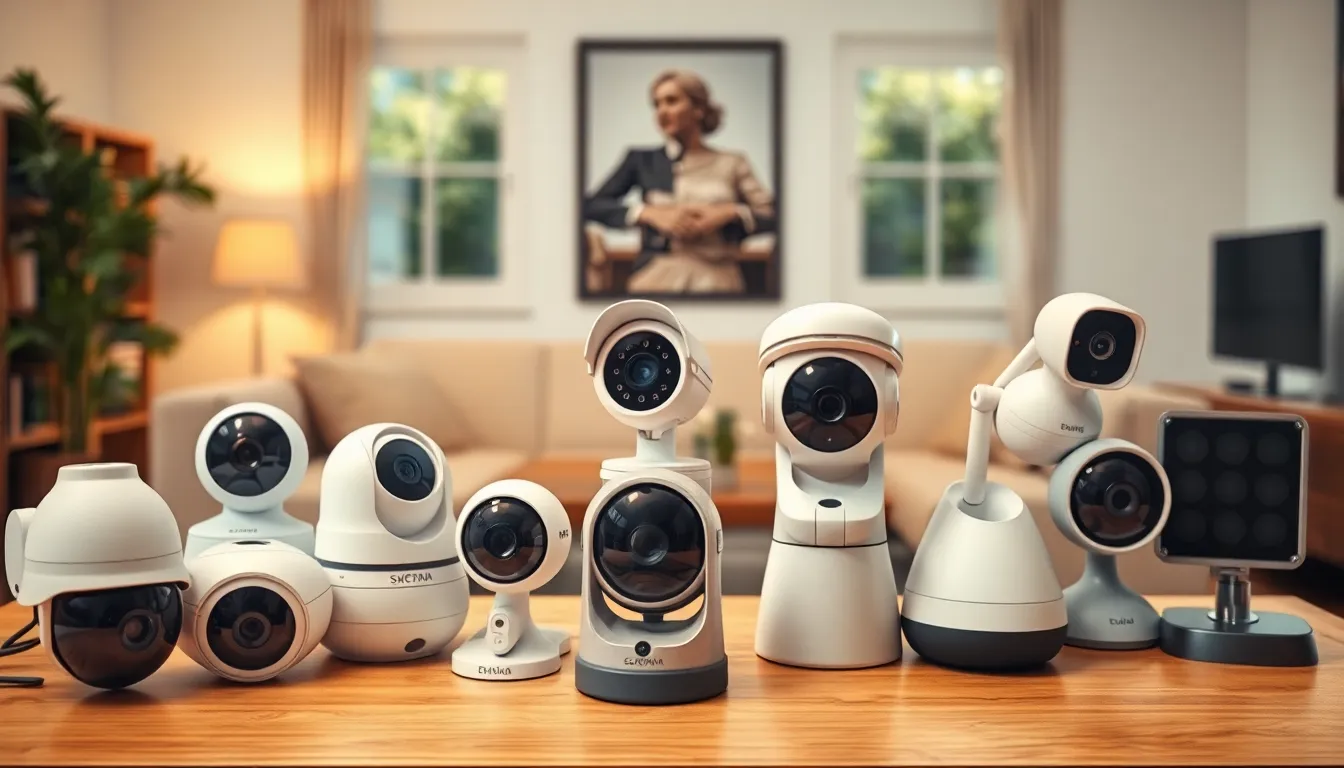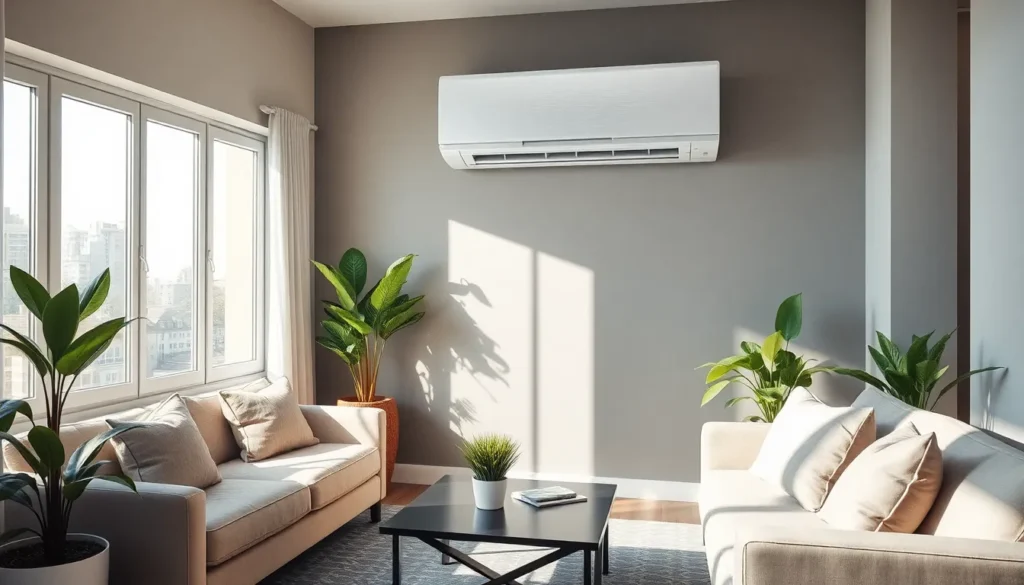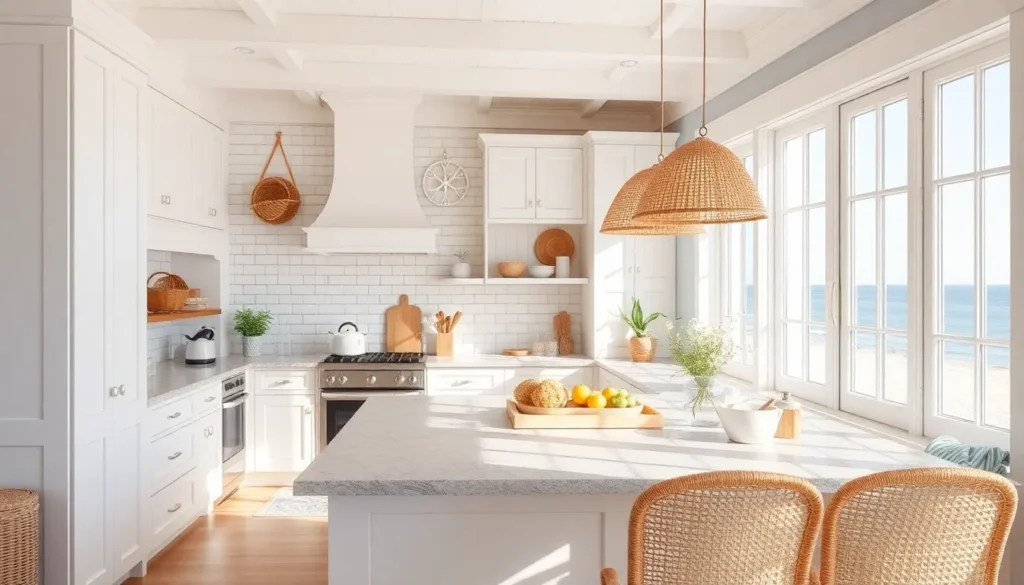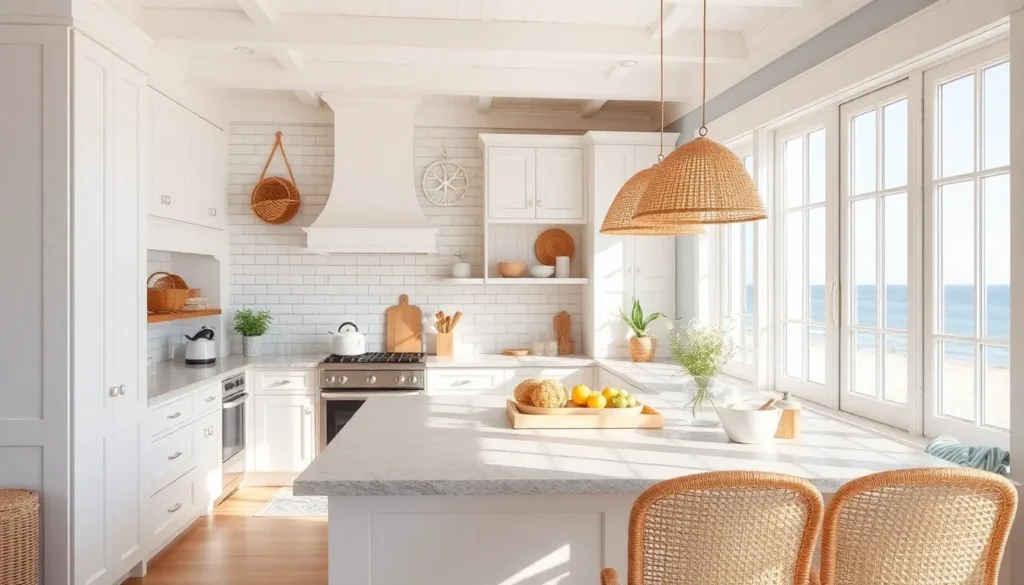Table of Contents
ToggleIn a world where the only thing more unpredictable than the weather is the neighbor’s cat, home security cameras have become the modern-day guardians of our castles. Imagine having a trusty sidekick that never sleeps, doesn’t eat your snacks, and always keeps an eye on things while you’re out living your best life. With the right camera, you can catch everything from the mailman’s questionable dance moves to that sneaky raccoon raiding your trash.
Gone are the days of relying solely on a “Beware of Dog” sign. Today’s home security cameras offer peace of mind, ensuring your home is safe from unwanted visitors and providing a front-row seat to the shenanigans happening outside. With options that blend seamlessly into your decor and features that would make James Bond jealous, investing in a home security camera isn’t just smart—it’s downright essential.
Overview of Home Security Cameras
Home security cameras play a crucial role in safeguarding properties. These devices offer continuous monitoring, allowing homeowners to keep an eye on their surroundings from anywhere. They come in various forms, including indoor, outdoor, wired, and wireless models.
Modern features set today’s cameras apart. High-definition video quality enables clear imaging, even during low-light conditions. Motion detection capabilities alert homeowners instantly if any suspicious activity occurs. Remote access through smartphone apps ensures users can monitor feeds in real time, providing added convenience.
Integration with smart home systems enhances the functionality of security cameras. Automated responses can trigger lights to turn on when motion is detected. Some cameras even support voice-activated technology, allowing users to query their systems hands-free.
Choosing the right camera involves considering specific needs. Options like pan-tilt-zoom (PTZ) cameras offer extensive coverage areas. Fixed cameras, on the other hand, provide a straightforward monitoring solution at a lower price point. Wireless models allow for easier installation without extensive wiring.
Cost plays an essential role in decision-making. Basic models can start around $30, while advanced systems with multiple features can exceed $500. Budget influences the level of security and technology homeowners can implement.
Security cameras provide peace of mind. With visible deterrents present, the likelihood of potential intruders decreases significantly. Investing in quality cameras not only protects homes but also enhances overall security awareness in neighborhoods.
Types of Home Security Cameras

Home security cameras come in various types, each designed to address specific security needs. Understanding these options helps homeowners make informed decisions.
Indoor Cameras
Indoor cameras monitor activities within a home, providing peace of mind to residents. Models often offer features like two-way audio and night vision. Such cameras enhance security by capturing footage of everyday life, ensuring that nothing goes unnoticed. Some indoor options include fixed cameras for a static view and PTZ cameras for flexible monitoring. Popular brands include Nest and Arlo, with prices ranging from $30 to $300.
Outdoor Cameras
Outdoor cameras are built to withstand weather conditions while providing crucial surveillance outside the home. Many models feature weatherproof casings, high-definition resolution, and motion detection capabilities. Some outdoor cameras come with floodlights and sirens that alert homeowners of suspicious activities. Important choices include bullet cameras for focused viewing and dome cameras for wider angles. Prices for outdoor cameras typically range from $50 to $500.
Wireless vs. Wired Cameras
Understanding the differences between wireless and wired cameras helps optimize home security systems. Wireless cameras offer flexibility in installation and are easier to reposition as needed. Wired cameras provide a consistent power supply and often deliver higher video quality. Wireless models often connect to home Wi-Fi, while wired options involve physical cabling for setup. Each type presents distinct advantages, with costs varying accordingly, typically from $30 for basic wireless models to $500 for comprehensive wired setups.
Key Features to Consider
Home security cameras come with various features that enhance their effectiveness. Understanding these key aspects helps in selecting the best model for specific needs.
Video Quality
Video quality plays a crucial role in the performance of home security cameras. Cameras that offer 1080p high-definition resolution provide clear, detailed images. Higher resolutions, such as 4K, deliver even sharper visuals, making it easier to identify faces or license plates. Look for cameras that support wide dynamic range for better performance in challenging lighting conditions. Additionally, ensure the camera has a high frame rate for smooth video playback.
Night Vision
Night vision is essential for round-the-clock surveillance. Cameras equipped with infrared LEDs allow for clear images in total darkness. Some models offer color night vision, enhancing visibility during low-light situations. A range of 30 to 100 feet is common for effective night vision capabilities. Check specifications for the model’s night vision range to ensure comprehensive coverage during nighttime.
Motion Detection
Motion detection technology enhances the functionality of security cameras. Cameras that utilize advanced algorithms reduce false alarms caused by non-threatening movements, such as passing cars or pets. Look for features like customizable motion zones that allow homeowners to prioritize specific areas. An immediate notification feature alerts homeowners about detected movements, enabling quicker responses to potential issues.
Storage Options
Storage options significantly impact the usability of home security systems. Cloud storage services often offer plans ranging from basic to more extensive options based on user needs. Some cameras include local storage via microSD cards, providing immediate access to recorded footage. The capacity for continuous recording or scheduled recordings may vary, so it’s essential to research the specific model’s storage capabilities.
Pros and Cons of Home Security Cameras
Home security cameras offer various benefits and challenges that homeowners should consider.
Advantages of Using Cameras
Affordable options exist for enhancing home security. Cameras deter potential intruders, significantly lowering crime rates in neighborhoods. High-resolution video captures clear images, facilitating effective monitoring. Night vision capabilities ensure visibility in low light, aiding surveillance around the clock. Many cameras support remote access via smartphone apps, allowing users to monitor their property in real time. Integration with smart home systems further enhances convenience, enabling automation and interactive features. These devices often provide peace of mind, reassuring homeowners of their safety while away. Instant alerts for motion detection increase responsiveness to potential threats.
Disadvantages to Consider
Privacy concerns arise with the use of home security cameras. It’s possible for hackers to access unsecured devices, compromising personal security. Regular maintenance is necessary to ensure cameras function correctly. Some models require subscriptions for cloud storage, leading to ongoing expenses. Additionally, the reliance on internet access can create vulnerabilities during outages. Installation challenges may discourage some users, especially with wired systems requiring professional help. False alarms from motion detection could lead to unnecessary worry or overreactions. Evaluating these drawbacks helps homeowners make informed decisions.
Home security cameras have become an essential part of modern safety measures. They offer homeowners the ability to maintain a watchful eye on their properties while enjoying peace of mind. With a variety of options available, selecting the right camera tailored to specific needs can greatly enhance security.
Investing in these devices not only deters potential intruders but also fosters a sense of community awareness. As technology continues to advance, homeowners can expect even more innovative features that improve usability and functionality. Embracing home security cameras is a proactive step towards safeguarding one’s home and loved ones.







